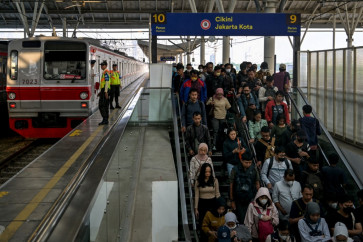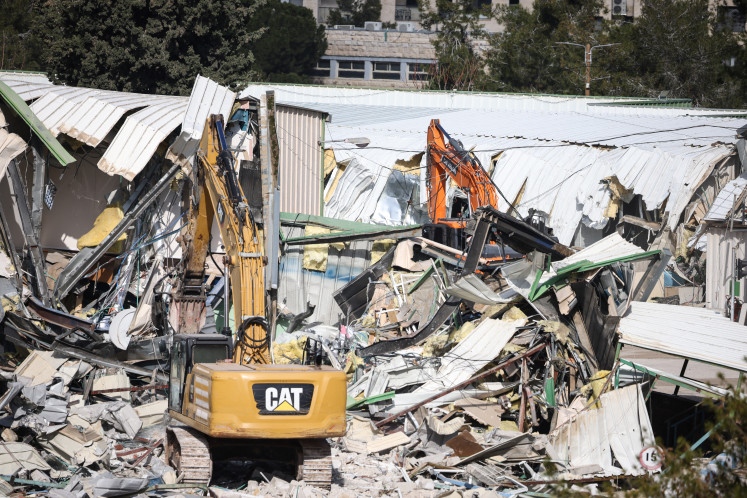Popular Reads
Top Results
Can't find what you're looking for?
View all search resultsPopular Reads
Top Results
Can't find what you're looking for?
View all search resultsReviewing the ASEAN Charter
The Association of Southeast Asian Nations (ASEAN) Charter came into force in December 2008; 30 days after Thailand deposited its instrument of ratification with the ASEAN secretary-general, at the Thai mission in New York on Nov
Change text size
Gift Premium Articles
to Anyone
T
he Association of Southeast Asian Nations (ASEAN) Charter came into force in December 2008; 30 days after Thailand deposited its instrument of ratification with the ASEAN secretary-general, at the Thai mission in New York on Nov. 14, 2008. Having handed it over, Thailand’s permanent representative to the United Nations, Ambassador Don Pramudwinai, stated, “It [ASEAN] will be a rules-based and people-oriented organization with its own legal personality”.
However, is ASEAN truly a rules-based and people-oriented international organization? Having been tested for almost five years, has the Charter been able to institutionally and legally empower ASEAN to achieve its objectives?
Article 50 of the Charter stipulates, “the Charter may be reviewed five years after its entry into force … ”. Therefore, mandated by this Article, it is now time for us to review and examine the effectiveness and adequacy of the Charter in strengthening the institutional and legal framework of ASEAN as a people- and community-based international organization.
In general, after five years in operation, as we have seen, the Charter has been weak in empowering the institutional and legal capacity of ASEAN to attain its purposes. Highlights of the 15 purposes of ASEAN as stipulated in Article 1 of the Charter, include the aim “to maintain and enhance peace, security and stability…in the region”, and “to strengthen democracy, enhance good governance and the rule of law, and to promote and protect human rights and fundamental freedoms … ”.
However, actual cases show us that the power of ASEAN is not effective and strong enough to “enforce” its purposes and principles upon ASEAN member states (AMS). In practice, the principles of sovereignty and non-interference as stated in the Charter have constrained ASEAN in attaining its objectives. As long as ASEAN rigidly upholds these principles it will not be able to implement programs and achieve its objectives effectively.
ASEAN, for instance, is weak in imposing its rules on AMS who harshly abuse human rights or degrade the environment. The human rights abuses against the Rohingya (in Myanmar), separatist movements and migrant workers and the case of haze pollution and other cross-border environmental incidents show us the weakness of ASEAN in protecting human rights and the environment.
As these cases were “internal affairs” of the AMS involved and due to the principle of non-interference, ASEAN was prevented from protecting human rights and the environment. There are no ASEAN legal bodies to legally enforce and protect human rights and the environment. The institutional design and powers of the ASEAN human rights body created by Article 14 of the Charter are not strong enough to promote and protect human rights and fundamental freedoms of ASEAN’s peoples.
The decision-making process, mainly based on consensus, stipulated in Chapter VII of the Charter tends to be elitist and political. As a people-oriented organization pursuing democratic principles and objectives, ASEAN should give more space to and empower the peoples of ASEAN to participate in and influence the decision-making process. Civil society and public interest groups should be given more access to the decision-making process in ASEAN-related summits and meetings.
The use of consensus stipulated in Article 20 of the Charter as an “ASEAN way” of resolving differences, to some extent, is political and undemocratic. For achieving a consensus, for instance, an AMS who has stronger bargaining power and influence may dictate the direction and substance of the decision. The case of ASEAN’s failure to make a joint communiqué to resolve the differences in the case of South China Sea disputes is one example.
The Charter also has no effective enforcement mechanism to impose rules and sanctions on AMS. In the case of non-compliance by an AMS with the findings, recommendations or decisions resulting from an ASEAN dispute-settlement mechanism, any affected AMS “may refer the matter to the ASEAN Summit for a decision”, as stipulated in Article 27 of the Charter. Again, ASEAN summits are a political forum with political interests. For effective conflict resolution, in some cases, legal disputes or non-compliance should not be referred to what is a political decision-making process.
Therefore, if ASEAN is determined to build a truly ASEAN community, it urgently needs a judicial body with compulsory jurisdiction. This judicial body would act as an ASEAN supreme court protecting human rights and the fundamental freedoms of the ASEAN people. This court should also serve as a final court of appeal for adjudicating ASEAN (transnational) crimes, such as crimes against the environment, corruption, human trafficking, terrorism, drug abuse and money laundering. If not satisfied with the decision of the supreme court of one’s own country, an accused or a public prosecutor might appeal his case to this ASEAN supreme court.
Another critical issue which needs to be answered is, in a conflict between ASEAN laws and AMS laws, which laws should prevail? This is a classical question of supremacy in international law between international laws and national laws.
Again, if the peoples of ASEAN seriously intend to build a truly ASEAN community with all the purposes stipulated in the Charter, they should give more supremacy to ASEAN laws over national laws. In another words, national constitutions, laws, policies and actions of an AMS might be annulled if these contravened the objectives, principles and policies of ASEAN. For this purpose, an ASEAN constitutional court with the power to review and annul national laws and policies should be established.
In Indonesia’s case, for example, a person might ask the Constitutional Court to review and annul the laws which adopted the ASEAN free trade and market-based, capitalist economy. He or she might argue that these laws contravene the socialist or people-based economy adopted in Article 33 of the 1945 Constitution.
However, as this “new and reformed ASEAN” would significantly affect the life of ASEAN’s peoples, they themselves must decide and participate in reviewing and reforming the ASEAN Charter. In a referendum, the peoples of ASEAN must be given the chance to freely decide the form of a society they will live in within an ASEAN community.
The writer is an international legal and policy analyst at the Indonesian Cabinet Secretariat. The opinions expressed are his own.










